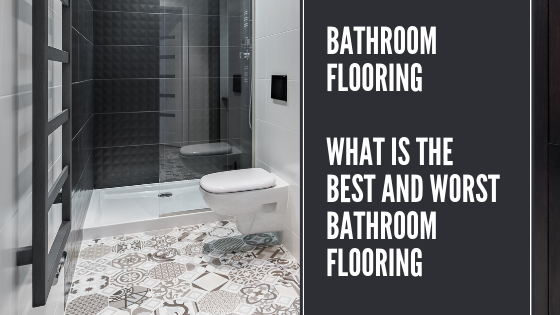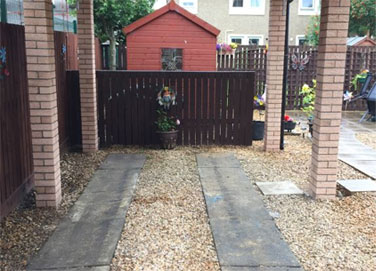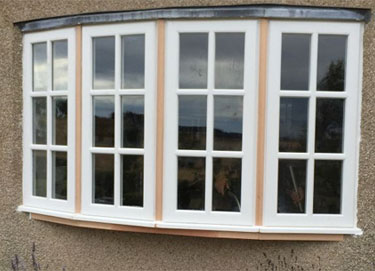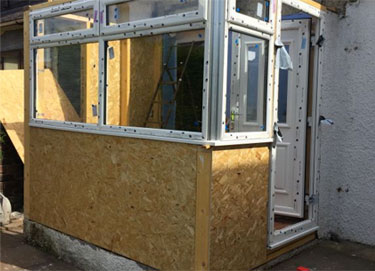So this is a question that we get asked frequently when doing bathroom refurbishment and to be honest this is a personal preference and everyone is different.
When choosing bathroom flooring, consider how it will perform under stress.
And the stress event in this case involves water, lots of it. Water is so prevalent in bathrooms that it is an expectation, not an anomaly.
Water is everywhere: on the walls, ceiling, and the floor.
Moisture will quickly ruin the wrong flooring. To make matters even more difficult, you eventually have to pull those other factors into the dialogue.
If moisture were the only factor, sheet vinyl or ceramic tile would likely win every time. But these additional factors, like durability, appearance, cost, and ease of installation, need to be considered, as well.
When working in a bathroom, we would recommend that you decide to go with porcelain or ceramic tiles or a vinyl flooring.
Porcelain or Ceramic Tile – Bathroom Flooring Choice
Porcelain tile is the best of all worlds for bathroom flooring, as it is waterproof, stylish, and cost-effective.
Like stone, porcelain tile can achieve a rich, textured, solid feeling.
Like vinyl, it is waterproof and is fairly inexpensive.
Should you choose porcelain or ceramic tile and is there a difference between the two?
Porcelain and Ceramic Tiles
Porcelain is part of the general ceramic tile family with one slight difference: water absorption rate.
The Porcelain Tile Certification Agency (PTCA) certifies types of tile as “porcelain” if these tiles have a water absorption rate of 0.5-percent or less.
If this is a half bathroom or powder room, there is less of a need to purchase porcelain tiles because there are no bathing facilities.
Because there are so many different types of ceramic tiles, you can create the exact floor you want. You can even find ceramic tile that looks like wood or stone.
Individual tile comes in a wide variety of size and shapes, from square and rectangular to octagonal and hexagonal.
Smaller mosaic tiles are pre-mounted on plastic mesh sheets, so you do not have to individually set each tile. With tinted grout, you can be even more creative.
Best of all, tile cleans up well and resists even standing pools of water. Like stone, tile is cold. However, radiant or heated tile can be laid under the tile. Wet tile is slippery. But texturing solves that problem. Smaller tiles are less slippery because more grout is used and the grout acts as a non-skid surface.
Pros and Cons of Tiles
Pros
- Many style choices
- Good resale value
- Works well with radiant heating
- Cleans up well
Cons
- Cold under foot
- Hard under foot, so it is difficult to stand on for long periods
- Often sterile-looking
- Slippery
Vinyl Flooring
Good-looking and supremely practical, vinyl has been a popular choice for bathroom flooring for decades.
Sheet vinyl flooring is your best option if extreme amounts of water are expected, such as in children’s bathrooms or laundry rooms.
Because it comes in large sizes, sheet vinyl can be installed with as few as zero-seams in a small bathroom.
Luxury vinyl plank flooring, an increasingly popular choice, comes in widths of around 5 inches and lengths of around 48 inches.
Most vinyl flooring is very much a do-it-yourself job. Because vinyl is so popular, there are thousands of style options available.
Pros and Cons
- 100-percent waterproof
- Cost-effective
- Plank seams are waterproof
- Tile and plank are easy for do-it-yourselfers to install
- Floating vinyl flooring is easy to replace
- Often has poor resale value
- Bumps and gaps on the underlayment or subfloor can telegraph to the vinyl surface.
Flooring to Avoid in the Bathroom
Wall-to-Wall Carpeting
Because carpeting retains moisture for so long, it tends to dry out slowly within the confined spaces of bathrooms.
This makes carpet a poor flooring choice for bathrooms.
However, if you do wish to have carpet in the bathroom, make sure the pile is low and the material is 100-percent inorganic, such as olefin or nylon.
Solid Hardwood
Except for its top coating, solid hardwood has no protection against moisture.
Even the smallest amount of moisture that works its way into the wood will eventually rot it out.
Only slightly better than carpet, solid hardwood looks great and feels warm under foot. If you absolutely do want solid hardwood in your bathroom, make certain it is perfectly installed, with zero gaps for moisture.
This means hiring professional installers. It also means that site-finishing your hardwood flooring works better than installing pre-finished flooring.
Site-finishing floods the seams between the boards with coating, effectively blocking moisture migration from the top side.






